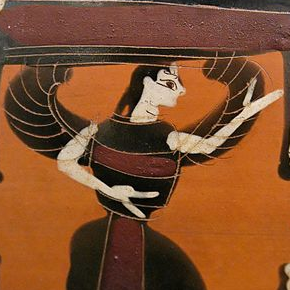Output¶
herfd task
The output of the
herfdtask is a data file in the XDI format containing the HERFD spectrum at the specified emission energy and, if requested, gif images with the mask.At each energy point, the HERFD signal is computed from the Pilatus image using the mask created as described above. The counts on each pixel lying within the illuminated portion of the mask are summed. This sum is the HERFD signal at that incident energy.
A column data file is written containing the energy and several scalars from the original measurement and a column containing the HERFD signal. This file can be imported directly into Athena.
rixs task
The output of the
rixstask is the same as for theherfdscript at each emission energy.Todo
Athena .prj output from bla program
xes task
The output of thexestask is a data file in the XDI format containing the XES spectrum from that incident energy with the signal from each emission energy weighted by the number of illuminated pixels in that mask.
plane task
The output of theplanetask is a data file in a simple format containing the emission intensity in the RIXS plane. This file can be read by gnuplot to display a map of the RIXS plane.
map task
The output of themaptask is a data file in a simple format which can be read by gnuplot to display a map of detector column vs detector row with the color axis showing energy. Gif files for the masks at each emission energy are also written.
mask task
The output of themasktask is a single gif file containing the mask for the specified emission energy.
point task
The output of thepointtask is the HERFD value extracted from a specified BLA image for a specified emission energy. The value is printed to STDOUT. If files containing the BLA image or the emission mask do not exist or if any other problem is encountered, 0 is printed to STDOUT.
On Windows, tiff files are written rather than gif files.
The herfd, rixs, xes, and map tasks are intended for
post-processing of a full data set.
The mask and point tasks are intended for inlining in the data
acquisition process. The mask task should be run after measuring the
elastic images at the emission energy and before measuring the HERFD
data. The mask task takes a couple seconds.
The point task is intended for generating the HERFD value at a
specific emission energy during the scan. This value can be used for
plotting or storing to the output data file. The point task takes
less than 1 second.
Animations¶
Using ImageMagick on the output masks:
convert -layers OptimizePlus -delay 5x100 *mask.gif -loop 0 mask_animation.gif
Todo
Write animations using PDL
XDI Output¶
All ASCII column data is written in the XDI format. This is
particularly handy for the RIXS function. If XDI metadata is
provided, then the BLA.pixel_ratio metadata item will be written
to the output file. This number is computed from the number of pixels
illuminated in the mask at each emission energy. The pixel ratio for
an emission energy is the number of pixels from the emission energy
with the largest number of illuminated pixels divided by the number of
illuminated pixels at that energy.
The pixel ratio can be used to normalize the μ(E) data from each emission energy. The concept is that the normalized μ(E) data are an approximation of what they would be if each emission energy was equally represented on the face of the detector.
The version of Athena based on Demeter will be able to use these values
as importance or plot multiplier values if the Xray::XDI module is
available.
XDI metadata about the beamline and sample can be supplied using the
-x switch for the bla program, the BLAXDIINI
environment variable, or in the [files] block of the configuration
file. Here is an example ini file used to provide this metadata.
[column]
1 = energy eV
2 = mu
3 = i0
4 = it
5 = ifl
6 = ir
7 = herfd
8 = integration seconds
9 = ring mA
[xescolumn]
1 = energy eV
2 = xes
3 = npixels
4 = raw
[beamline]
name = APS 10ID (MRCAT)
collimation = none
focusing = HR mirror in the vertical, KB mirror in the horizontal
harmonic_rejection = Pt coated mirror
[facility]
energy = 7.00 GeV
source = APS Undulator A
[mono]
name = Si (111)
d_spacing = 3.13553
[detector]
i0 = 1cm N2
herfd = bent Laue analyzer, Si(660), Pilatus 100K
Xray::BLA and METIS are copyright © 2011-2014, 2016 Bruce Ravel and Jeremy Kropf – This document is copyright © 2016 Bruce Ravel
This document is licensed under The Creative Commons Attribution-ShareAlike License.
If this software and its documentation are useful to you, please consider supporting The Creative Commons.
